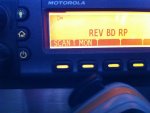Okay Radio Folks,
Help me out here.
Handheld Tactical Radio Channels
11 IN-BLDG RPTR
12 MOBILE RPTR
13 SUBW RPTR F1
14 SUBW RPTR F2
Can operate in the REVERSE mode. (see attached Picture)
To quote the FDNY Operational Reference Book "9th Edition" that just came out
http://www.fire-police-ems.com/books/bf1119.shtm (highly recommend it for anyone interested in the FDNY)
"...plus four "reverse" channels for use in the event of repeater failure. For channels 11-14 there 17-20 labeled REV"
These are sometimes referred to as "Talk Around".
See attached picture.
So ... just for my radio in my vehicle and at home, is the channel I see on the Motorola Mobile Unit just the UHF frequency with a different PL Tone to handle the "Reverse" side?
Not looking to transmit here, just looking to make sure my scanners at home and in the truck are programmed correctly. Not being a radio person, was hard for me to get my head wrapped around this.
My kind thanks,
JR
Help me out here.
Handheld Tactical Radio Channels
11 IN-BLDG RPTR
12 MOBILE RPTR
13 SUBW RPTR F1
14 SUBW RPTR F2
Can operate in the REVERSE mode. (see attached Picture)
To quote the FDNY Operational Reference Book "9th Edition" that just came out
http://www.fire-police-ems.com/books/bf1119.shtm (highly recommend it for anyone interested in the FDNY)
"...plus four "reverse" channels for use in the event of repeater failure. For channels 11-14 there 17-20 labeled REV"
These are sometimes referred to as "Talk Around".
See attached picture.
So ... just for my radio in my vehicle and at home, is the channel I see on the Motorola Mobile Unit just the UHF frequency with a different PL Tone to handle the "Reverse" side?
Not looking to transmit here, just looking to make sure my scanners at home and in the truck are programmed correctly. Not being a radio person, was hard for me to get my head wrapped around this.
My kind thanks,
JR


